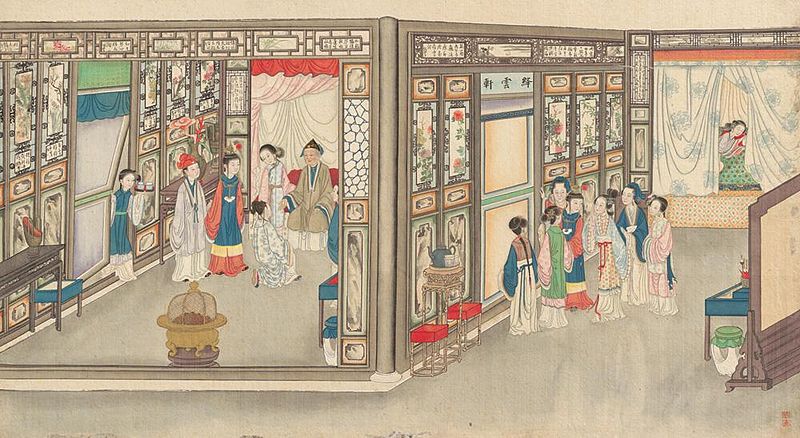A Look at Girls of China’s Qing Dynasty, as Depicted in the Great Classical Chinese Novel “The Dream of the Red Chamber”
Novels written during the imperial era of China aren’t my particularly favorite books to read. They are written using traditional Chinese prose which contain heavy influences from poetry and folklore, and were written using a form of literary Chinese that was vastly different from the modern standard language of Mandarin Chinese. Therefore, it can be hard sometimes for me to understand certain words and idioms. However, there is one book that I have read countless times and has remained my most favorite book since I was 11 years old. The book is called The Dream of the Red Chamber, considered by scholars to be one of the Four Great Classical Novels in the history of Chinese literature.
The Dream of the Red Chamber was written by Cao Xueqin during the Qing Dynasty (1644-1912). The entire book consists altogether of 120 chapters, however commentators of the work both past and present believe that when Cao finished writing the novel, only the first 80 chapters of his work were preserved. The rest of the original work still remains to be rediscovered, and many writers since then have tried to finish The Dream of the Red Chamber with their own interpretations. Gao E, a fellow Qing editor and writer, was one of these writers. Nowadays, his ending (which consists the last 40 chapters) is the most widely accepted amongst readers and scholars.
When I was in middle and high school, we were required to read all four of the Four Great Classical Novels. However, I was only interested in The Dream of the Red Chamber because it is the only book that focused the story on female characters instead of men. While the other three classical books told the story of brave men fighting in wars while women only appear briefly as supporting roles, The Dream of the Red Chamber depicted women’s lives and experiences during the Qing era with sincerity, empathy, and respect. The book tells the story of a rich aristocratic family, the Jias, as they slowly crumble under their own decadence and excess. Cao spent great detail on focusing the character development on mostly the female characters. For example, how the matriarchs manage and operate a huge family with thousands of members, how the female servants such as cooks, maids, and custodians live their daily lives, how young elite girls from the family read, sew, and wrote poetry, and how family members with different titles and relationships interacted with each other.
By reading this book, readers can closely examine exactly how women lived during the Qing dynasty.
If you are a girl from an elite family, you will always be surrounded by many servants and have very little privacy. You will receive basic education at home, read books on female virtue (as to how to be a “proper” woman), and nurture your sewing skills. As an unmarried elite girl, your most important job is to prepare for the life that emerges after you marry your future husband. Because elite family members will only marry someone from a family from the same class, it is very likely that you will marry into the same type of family that also employs many servants. Therefore, it is also important to help your husband not only manage a household of kids and extended family members, but also servants, guards, and cooks.
If you are a girl from a common family, you will not be given any education. In order for common people to move up the social ladder during the Qing Dynasty, the only way was to achieve high grades in the Civil Service Examination. However, only men are allowed to prepare and take the exam, therefore the common family will not waste money to send their daughters to school. Most likely you will not know how to read and write, but skills such as sewing and cooking are required. You will also be prepared to help your future husband maintain the daily operation of a smaller family.
If you are a girl from a family who is indentured in servitude, you will be a servant for an elite family. For common families who are very poor, they might also sell their children to a wealthy family as servants. You will be assigned to serve in different sections of the family, depending on the need and your skills. In an elite family like the one in the book that is well-educated and wealthy, you will receive monthly paychecks and live a relatively good life. But in other families that treat their servants badly, you will have a very hard life. If the person you serve is an unmarried elite girl, when they get married, there are chances that you will follow them to the new family.
-Mengshu Ye
Junior Girl
Girl Museum Inc.

